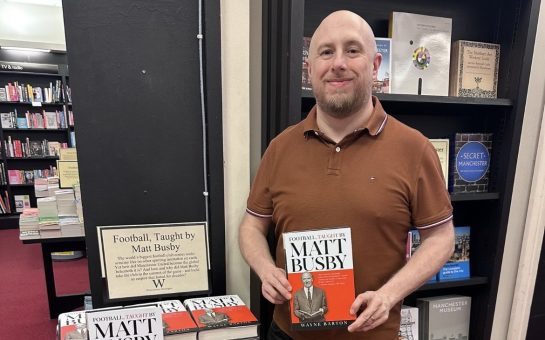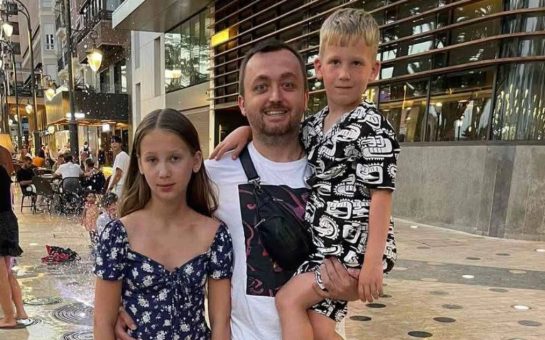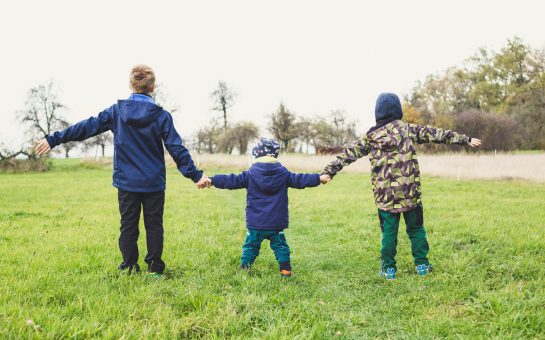While most children enjoy seeing Cinderella’s wicked stepsisters come to a foul end in Disney’s classic animation, few would rejoice if that scene involved pigeons pecking out their eyes.
Yet this was the awful fate destined for the two sisters in the Brothers Grimm version of the fairy tale.
MM examine how the stories we tell our children – and therefore the way we present the world to them – have changed.
Children across Manchester proudly stepped out dressed as their favourite fictional characters as part of the World Book Day Celebrations last Wednesday.
The colourful occasion saw many tiny Gruffalos, Wizard of Oz favourites, Little Mermaids, a handful of Peter Pans and even a Mary Poppins, proudly representing the most iconic fictional characters throughout Greater Manchester.
Children are exposed to books and told the importance of reading from an extraordinarily young age.
While this exposure certainly has many an educational benefit for children, it is possible that many are over-indulged in the false but comforting representation of reality within fairy tales?
Should children be able to escape to the safe haven provided by a fairy tale, or should they be more exposed to the realities and hardships of life?
Carla Kovach, children’s playwright and young-adult novelist, believes that modern fairy tales have been watered down in an effort to protect young children.
Yet she believes this may actually do more harm than good.
She said: “I believe that naivety in children can stem from trust in adults. For example, the Witch in Hansel and Gretel was originally regarded as a nice old lady with sweets.
“The wolf in the woods in Little Red Riding Hood represents the way in which predators manipulate children’s trust in adults and how they become victims of their own sense of adventure.”
Ms Kovach, who believes that the Brothers Grimm fairy tales would be far more beneficial for children, explained: “They expose villains in their true ugliness. It will prepare children for the real versions in real life today.
“The morals are excellent, the friendly wolf and the old lady with the candy house aren’t always what they seem.”
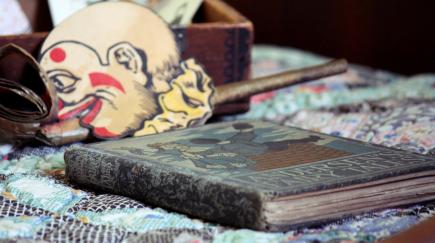
IS THE OLD ONES ALL THE BEST? Old versions of fairy tales often had particularly gruesome endings (image courtesy of Derek Bruff, with thanks)
The child author, also the creator of child’s play The Meanest Genie, which premieres in June, added: “The original versions challenge stereotypes. For example, Snow White shows a little elderly lady selling apples who is actually very dangerous.
“In contrast, seven dwarves who have serious attitude problems turn out (with some deliberation) to be her saviours.
“Not to mention the poor beast from Beauty and the Beast who simply wishes to be loved for who he is. They would teach kids not to judge a book by its cover.”
Many young children are completely enchanted by the common fairy tale, and girls often grow up believing in the concept of Prince Charming sweeping them off their feet and proceeding to live ‘happily ever after’ together in their fantasy woodland cottage (surrounded by an ensemble of singing animals) and far away from danger.
Should children should be suitably prepared for their future, retaining more realistic expectations of the world around them and the multiple ways in which life can be cruel?
Sophie Vickers, a teaching assistant from Liverpool, said: “I’d rather see my child involve themselves in a fantasy world with a happy ending rather than violent video games.”
The notoriously violent video game Grand Theft Auto has been targeted as the point of blame for youngsters acting violently or exhibiting bad behaviour.
On the August 24 last year, Sky News reported that a helpless 90-year-old woman in Louisiana was believed to have been killed by her eight-year-old grandson.
It was alleged the grandson had picked up a handgun before delivering a shot to her head, following his activity on the graphic and violent game. He was not prosecuted for the crime as children under 10 are exempt from prosecution in the state.
Back in 2008, New York Police arrested six teens who embarked on a malicious crime spree in the town of New Hyde Park. The group brutally mugged a man, knocking his teeth out, before attempting to car-jack a woman driving a BMW and smashing up a passing vehicle with a bat.
When questioned, the teens claimed that their inspiration was taken from Niko Bellic perpetrating violent crimes as part of GTA gameplay.
Is the violence displayed in video games something entirely new for the current generation – or have fairy tales historically been delivering grisly and violent storylines straight to children before bed?

MODERN DAY VIOLENCE: Children are exposed to guns and killing if they play games such as GTA (image courtesy of Rockstar games via YouTube, with thanks)
In brutal contrast to Disney’s version of Snow White, the original tale saw her mercilessly harassed by her wicked stepmother. Eventually, Snow White was forced to ‘put on red hot shoes from the fire and dance until she dropped down dead’.
The Little Mermaid is arguably one of the most-loved fairy tales amongst young girls.
However, young girls are sheltered from the brutal reality of the hardships Ariel had to endure.
She visited the Sea Witch and gave up her greatest talent for a love that may never materialise.
With the promise of a set of beautiful legs, and the ability to dance like no human ever had before, Ariel took the risk of never returning to the sea, despite being warned that she would consistently feel like she was ‘walking on sharp swords and her feet would bleed most terribly’.
Not only that, but she would only get the human soul if the prince actually fell in love with her.
Otherwise, ‘at dawn on the first day after he marries another woman, the Little Mermaid will die broken-hearted and disintegrate into sea foam’.
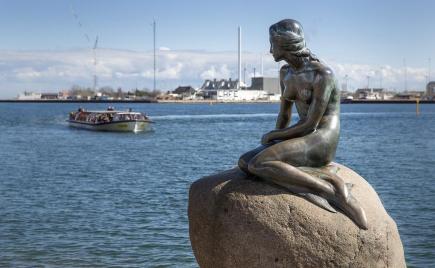
PAINFUL PRICE: The original Little Mermaid was told she would have bleeding feet (picture courtesy of News Oresund, with thanks)
Bleeding feet, agony walking and eventually disintegrating into sea foam are not present in many modern-day retellings of The Little Mermaid. Is this a good thing?
Ms Vickers admits that she would not want her five-year-old cousin nor any of the young children she teaches to be exposed to the originals as they are ‘too grisly’.
However Ms Vickers did admit that by cutting out some of the darker sides of the fairy tales, children could then struggle to understand negative situations in real life.
She said: “I think the thing with [idealistic] fairy tales is that they leave a lot of questions on the mouths of younger children, such as why their parents fight, or don’t live together, if they don’t read these things occurring in the stories they read.
“I believe that fairy tales have an impact on women in particular. Heterosexual women still hope for a prince to sweep her off her feet. The way in which all the princesses look the same gives a false representation of women.”
In Snow White children are faced with the story of a beautiful girl surrounded by many who dote upon her, is rescued from a fatal mistake by Prince Charming and then they lived happily ever after.
From an impressionable age, children are led to believe that Prince Charming will rescue us from life’s imminent hardships, or that somehow a magical fairy godmother will miraculously appear before us in our hour of need, and make our troubles disappear.
How many people will be saved from life’s hardships in such a way in the real world is debatable though.
And while we are left to ponder the fate of the sisters in the modern version, the original is more revealing.
On Cinderella’s wedding day, her stepsisters suddenly wished to ‘share in her good fortune’ and so walked her down the aisle.
Two pigeons landed on each of Cinderella’s shoulders, and ‘pecked out one eye of each of them’.
The sisters then swapped sides, and the pigeons ‘pecked out the other eye of each’.
In this way, the sisters were ‘punished with blindness as long as they lived for their wickedness and falsehood’. Graphic stuff.
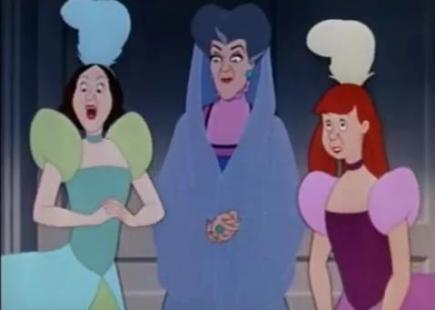
A GRISLY FATE AWAITS: Cinderella’s stepsisters had their eyes pecked out in the original tale (image courtesy of Disney via YouTube, with thanks)
While this version of events might traumatise some young children, it would expose them to the concept of punishment and justice from a young age – and certainly makes an impression.
Ms Kovach believes it would go on to provide them with a solid set of morals.
She thinks modern fairy tales fail to acknowledge the difficulties of maintaining a financially comfortable lifestyle, keeping on top of mortgage repayments and council tax.
Contrary to the description of typical life within fairy tales, we do not have the assistance of singing woodland animals when cooking a meal or giving our home a much-needed spring clean.
Nor do we have a set of singing mice to assemble a beautiful ball-gown when money grows tight and we cannot afford to buy one (or of course, provide a pumpkin when our cars inconveniently break down).
The cruel reality is that we are far more likely to be exposed to characters reflecting the ‘wicked’ and the ‘evil’, rather than Seven Dwarfs who generously accommodate a stranger.
In a cruel and scary world, it would be comforting for us all to believe in the existence of the magic so readily available in the world of modern fairy tales.
But how much does burying your head in fairy tales and books prepare you for the real world?
Do you think fairy tales are too watered down? Did the scary traditional versions of tales such as Cinderella prepare children better for growing up? Let us know your thoughts below.
